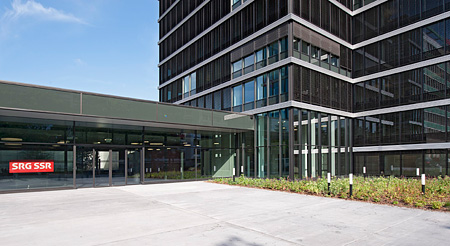Encoding from SD to HD
Public service broadcaster SRG SSR is the largest electronic media organization in Switzerland with 18 radio stations and eight television channels, as well as complementary website and teletext services.
SRG SSR services successfully hold their own against a variety of competing foreign broadcasters with much more financial muscle. Its television channels lead their respective markets in all four language regions at prime time.

We estimate that approximately 31 percent of Swiss households are currently able to receive HDTV channels. About 75 percent of Swiss households already have an HD-capable flat-screen television set, which can be used for HD television reception by adding an HD set-top box. We expect the share of HDTV households to increase to 50 percent by the end of 2012.
In preparation to meet the growing demand for HD, one of our television channels has been broadcast in HD since the end of 2007. The purpose of this channel is to provide the public with a high-quality channel using the latest technology, while giving us the chance to gain experience with HDTV technology – especially in terms of producing content and distributing it. The next step is to introduce HDTV on our other television channels starting in 2012.

The requirements for a new DVB-S system that could successfully address the challenges of migrating services from SD to HD over the next three to five years were demanding. During the transition we had to make sure that our existing services, including SD broadcast, teletext, VPS and WSS, experienced no interruption or service degradation. Additionally, we needed to ensure excellent picture and sound quality for the HD services, as well as teletext integration.
We chose Harmonic’s Electra 8000 multifunction encoders for SD and HD, MPEG-2 and MPEG-4 AVC encoding, as well as integrated statistical multiplexing. The Electra 8000 provides us with up to four channels in a single rack unit.
This density and power efficiency reduces our operational costs, which is very important as we’ve become more mindful of our carbon footprint and the rising cost of energy. In addition, with the Electra 8000 we’ve been able to reclaim bandwidth by increasing the channel count per transponder -- while maintaining video quality -- so we can continue to expand our HD services in the future.
We use Harmonic’s ProStream 1000 stream processing platform for bulk scrambling. We found the 1-RU platform to be a versatile stream processing solution that provides us with excellent video quality. And the NMX Digital Service Manager simplifies service management, by allowing us to configure, control, and monitor Harmonic video network elements easily.
Harmonic’s compression and processing solutions provide the video quality, bandwidth efficiencies, and flexibility to enable us to begin migration to HD, while continuing to provide legacy channels in SD until the transition is complete.
The professional video industry's #1 source for news, trends and product and tech information. Sign up below.
